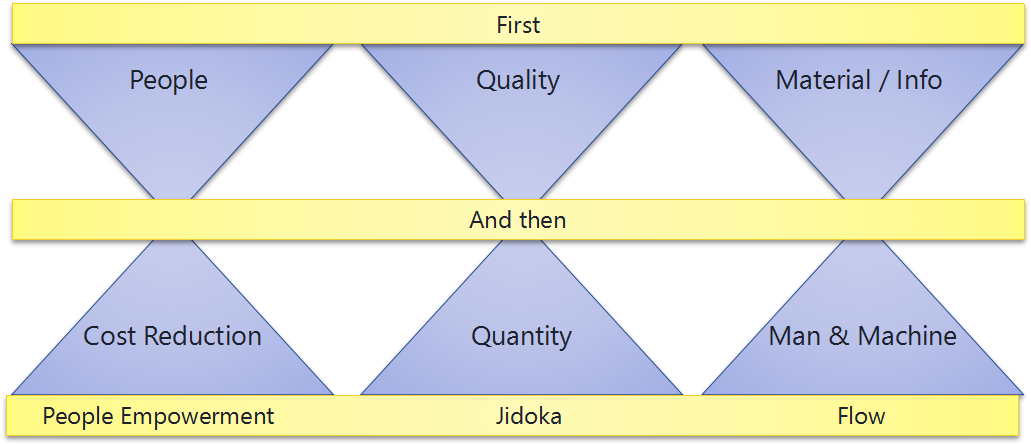
TRUE-LEAN GREEN BELT
Unleash the True Potential of Lean!
What is True-Lean?
Lean is more than just doing a project as in the case of Six Sigma. Six Sigma is an effective tool and no one can doubt its ability to deliver results and its guarantee to succeed with the efficient DMAIC framework. But Lean will not fit into the premise of Six Sigma and we strongly believe that Lean Manufacturing is best on its own.
By utilising Lean in the framework of DMAIC, the Six Sigma Projects are delivering far more efficient results. But Lean is treated as mere waste elimination exercise or a lead time reduction project in those instances.
How is True Lean Green Belt different from Lean Six Sigma Green Belt?
Six Sigma is a Point Optimisation methodology, meaning it looks into a point of the value chain and improves that point. Whereas, Lean is applied on the entire value chain. Without identifying the product family and value stream we cannot implement a true Lean Project. Hence, we structured the True-Lean Green Belt Program that will support True Lean Transformations.
Here, we discuss the Philosophy, Principles, and Practices of True Lean. The Principles cover value, value stream, identifying value streams, choosing the right value chain for Lean transformation. Along with these, we will also see how to develop the future state map supported by Kanban-supermarket, pitch, FIFO lane, and Heijunka.
We will discuss in detail the support mechanism of Lean transformation viz., SMED, Kaizen, Problem Solving, Andon, Poka-Yoke, TPM (Autonomous Maintenance and Planned Maintenance), and 5S.
True Lean Green Belt – Course Contents
Introduction to Lean
- Evolution of Lean
- What is Waste?
- What is Velocity? – Significance of Cash to Cash Cycle in Lean
- Lean Efficiency Metric – Process Cycle Efficiency
Value Stream Mapping
- What is Value & Non-Value: in terms of business and in terms of customer
- Value Stream: how the value is created within the process flow
- Mapping Tools Complementing VSM – 4 levels of Process Flow Diagrams & Spaghetti Diagram
- Who has to own VSM Projects?
- What is Value Stream Management?
Terminologies
- Takt Time: time provided by customer to produce one piece of product
- Process Time: sum of cycle times in the value stream
- Throughput Time: total time a finished piece has taken from raw material through value stream
- Other Time measurements
- Material & Information Flow
- Timeline
- Calculation of Process Cycle Efficiency
As is or Current State Value Stream Map
8 Steps of mapping current state value stream
- Identify Product Family using Product Family Matrix & Business Potential Analysis
- Get customer demand and calculate takt time
- Map customer order requirements and despatches
- Map Order Processing, Purchasing from Suppliers and Receipt of Raw material
- Track movement of material across processes with cycle time and inventory counts
- Map the communications
- Draw timelines and calculate Process Cycle Efficiency
- Identify Bottlenecks
Towards Lean – Future State Value stream Map
7 Steps of achieving Future State
- Produce to Takt Time
- Create Flow – of value addition wherever possible
- Supermarket & Kanban – control batch size where flow is not possible
- Pace Maker – set pace of flow based on demand
- Pitch – calculate interval between orders based on SKU size
- Level the Load – why does Toyota intentionally introduce changeovers?
- Every Part Every Interval – moving towards the shortest possible lead time for a variant
Lean Optimisation Tools
- Set up time Reduction – high set up time is the underlying reason for over production & inventory.
- Overall Equipment Effectiveness (OEE) & Total Productive Maintenance (TPM)
- 5S – is it all about housekeeping?
- Poka Yoke – mistake proofing – building intelligence into machines and systems
- Ergonomic Workstation Design
Course Duration
4 days – 32 hours.
Preferably at the plant site. We believe in Gemba approach.
Workshop Methodology
- Learning by Listening
- Learning by Teaching
- Discussions, Quiz & Videos
- Exercises
- Gemba Observation
- In-house case study (your own cases, examples, and Gemba observations)
Target Audience
The True Lean Green Belt program is designed for
- Managers, Executives and Shop floor supervisors involved in Process Improvement initiatives or Lean Transformation from Manufacturing, Engineering, and Auto companies
- Team Leaders, Project Managers and key people from IT and services company, looking for re-engineering the processes and improving efficiency
- Owners and Key People from SMEs looking for profit enhancement
- Key decision makers from any business interested in innovation and disruption
- Aspiring Students getting into industry

